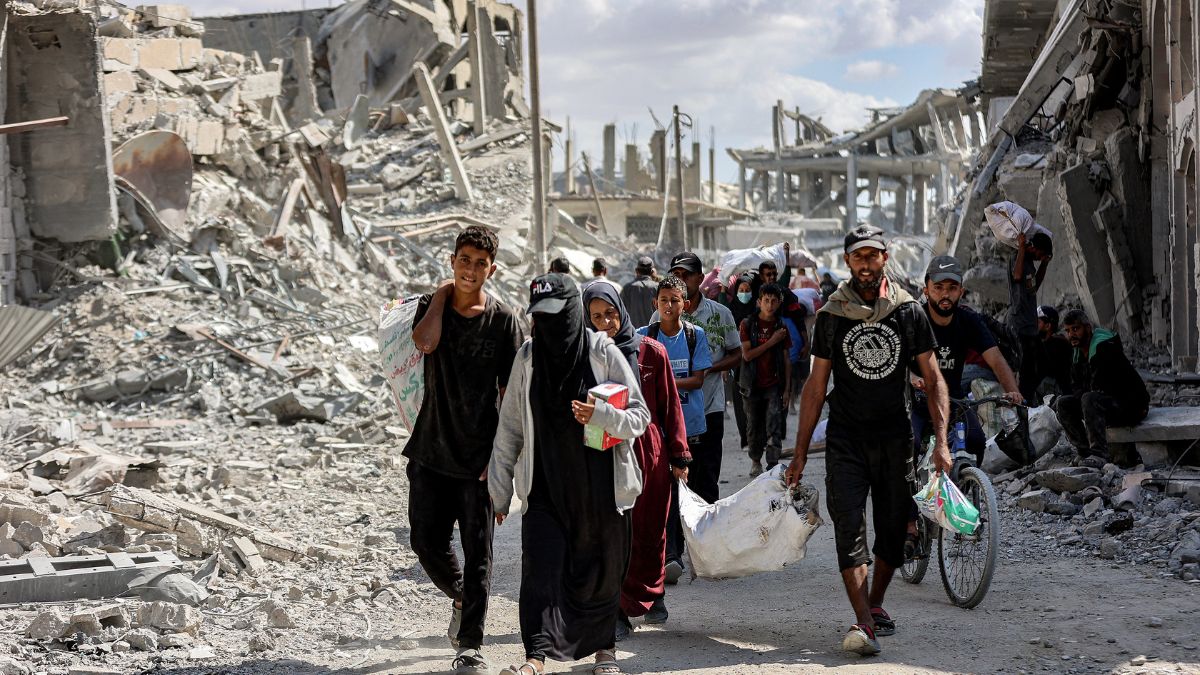A historic ceasefire between Israel and Hamas, brokered by US President Donald Trump has brought a tentative end to the two-year war in Gaza. The agreement, hailed as a diplomatic breakthrough includes provisions for a partial Israeli troop withdrawal, the release of hostages and the resumption of humanitarian aid. However, several critical questions remain unanswered, casting uncertainty over the long-term stability of the region.
How far will the Israeli Army pull back?
The ceasefire stipulates that Israeli forces will withdraw to agreed-upon lines within 24 hours to minimise friction with Gaza’s civilian population. While this marks a partial pullback from urban areas, Israeli troops will still control roughly half of Gaza’s territory. The specifics of these withdrawal lines and the timeline for further redeployment are yet to be clarified, leaving room for potential disputes and challenges in implementation.
How exactly will aid be allowed into Gaza again?
The agreement includes provisions for reopening key border crossings, such as the Egypt-Gaza crossing to facilitate the delivery of humanitarian aid. The United Nations plans to speed up aid into Gaza with an aim to reach 2.1 million people with food assistance and provide medical supplies to over 500,000 residents. However, the full implementation timeline remains uncertain and aid organisations have cautioned that bureaucratic obstacles and security concerns could hinder the effectiveness of these efforts.
Will Hamas disarm?
Israeli Prime Minister Benjamin Netanyahu has said that troops will remain in Gaza until Hamas is fully disarmed, warning that this may be achieved “the hard way” if cooperation is not forthcoming. While the ceasefire agreement marks the first phase of a broader peace plan, it does not explicitly address the disarmament of Hamas, leaving this critical issue unresolved and potentially setting the stage for future conflicts.
Who will run Gaza?
The agreement does not specify who will govern Gaza following the partial Israeli withdrawal. The power vacuum left by the absence of a clear administrative authority raises concerns about the potential for renewed internal conflicts or the resurgence of terrorist groups. The international community has yet to propose a viable governance framework, leaving Gaza’s political future uncertain.
What happens to the two-state Palestine solution?
The ceasefire agreement focuses on immediate humanitarian concerns and the cessation of hostilities but does not address the long-standing issue of Palestinian statehood. The two-state solution, envisioned as a means to resolve the Israeli-Palestinian conflict, remains sidelined in this deal. Without a clear path toward the establishment of a Palestinian state, the agreement risks being a temporary fix rather than a lasting solution to the region’s deep-rooted issues.
While the ceasefire represents a significant step toward peace, the unanswered questions highlight the complexities and challenges that lie ahead. The international community’s role in facilitating dialogue, ensuring humanitarian aid and supporting a sustainable political solution will be crucial in determining the future of Gaza and the broader West Asia.
)